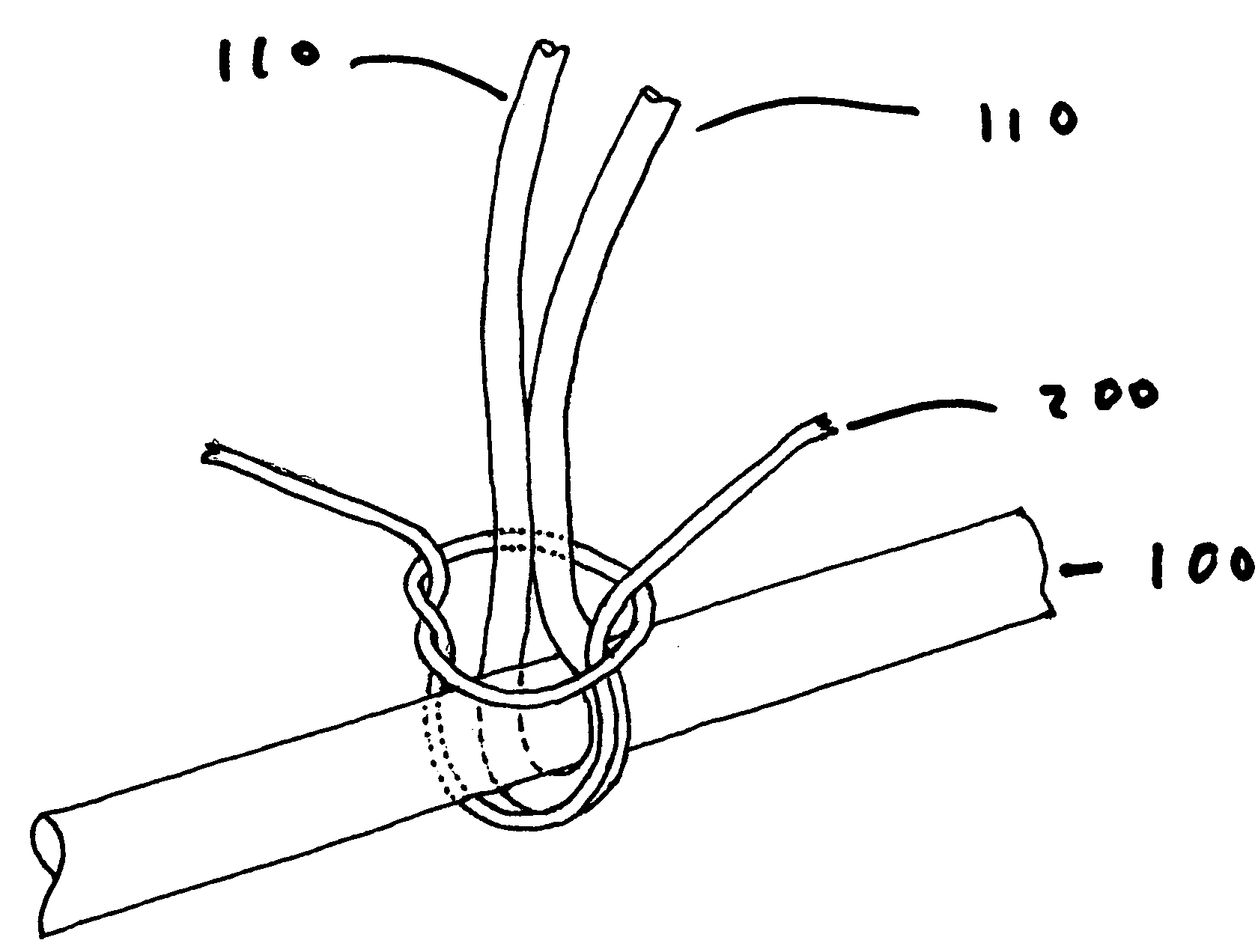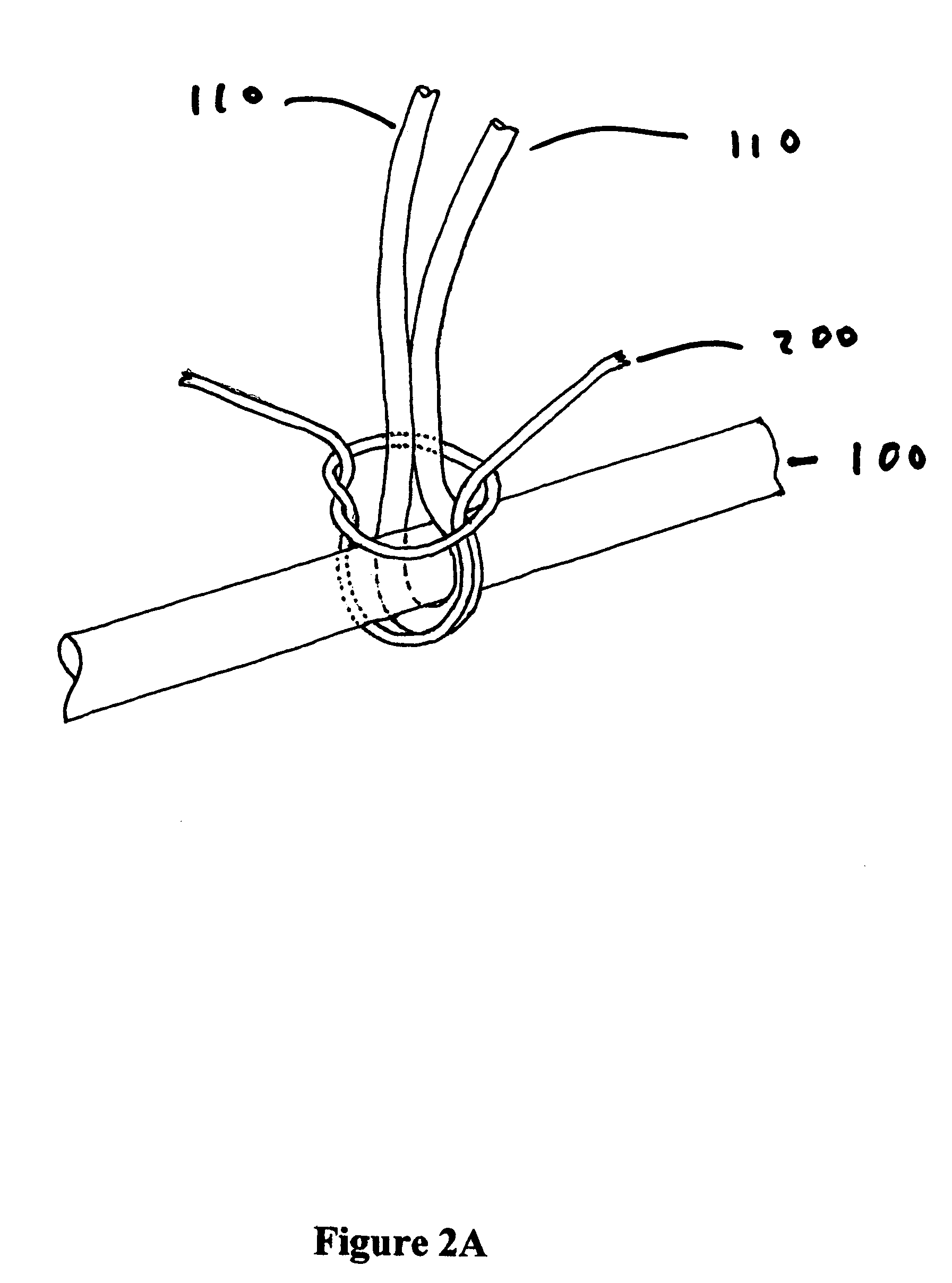Wigs and methods of wig manufacture
a technology of wigs and wigs, applied in the field of wigs and their methods of manufacturing, can solve the problems of easy damage to hair, easy pulling of hair from the base, and difficulty in using adhesives,
- Summary
- Abstract
- Description
- Claims
- Application Information
AI Technical Summary
Problems solved by technology
Method used
Image
Examples
Embodiment Construction
)
[0026]In embodiments of the invention, one or more attachment fibers are used to secure one or more hairs to the wig base, or to hold the wig base together. The attachment fiber is of a diameter similar to that of a human hair, and has or is capable of acquiring adhesive properties. In certain embodiments, the attachment fiber is composed of at least two layers, the outer layer or “sheath” having adhesive properties when melted, and having a lower melting point than the inner layer or layers, or “core.” In certain embodiments heat is applied to the attachment fibers at one or more points in the manufacturing process, causing the sheath material to flow freely and producing an adhesive which is useful in securing the hairs to the base, securing the hair to the attachment fiber, securing the attachment fiber to the base, and fusing the base joints in order to prevent unravelling. In other embodiments, the base can be made wholly or in part from the attachment fiber.
[0027]It should be...
PUM
 Login to View More
Login to View More Abstract
Description
Claims
Application Information
 Login to View More
Login to View More - R&D
- Intellectual Property
- Life Sciences
- Materials
- Tech Scout
- Unparalleled Data Quality
- Higher Quality Content
- 60% Fewer Hallucinations
Browse by: Latest US Patents, China's latest patents, Technical Efficacy Thesaurus, Application Domain, Technology Topic, Popular Technical Reports.
© 2025 PatSnap. All rights reserved.Legal|Privacy policy|Modern Slavery Act Transparency Statement|Sitemap|About US| Contact US: help@patsnap.com



